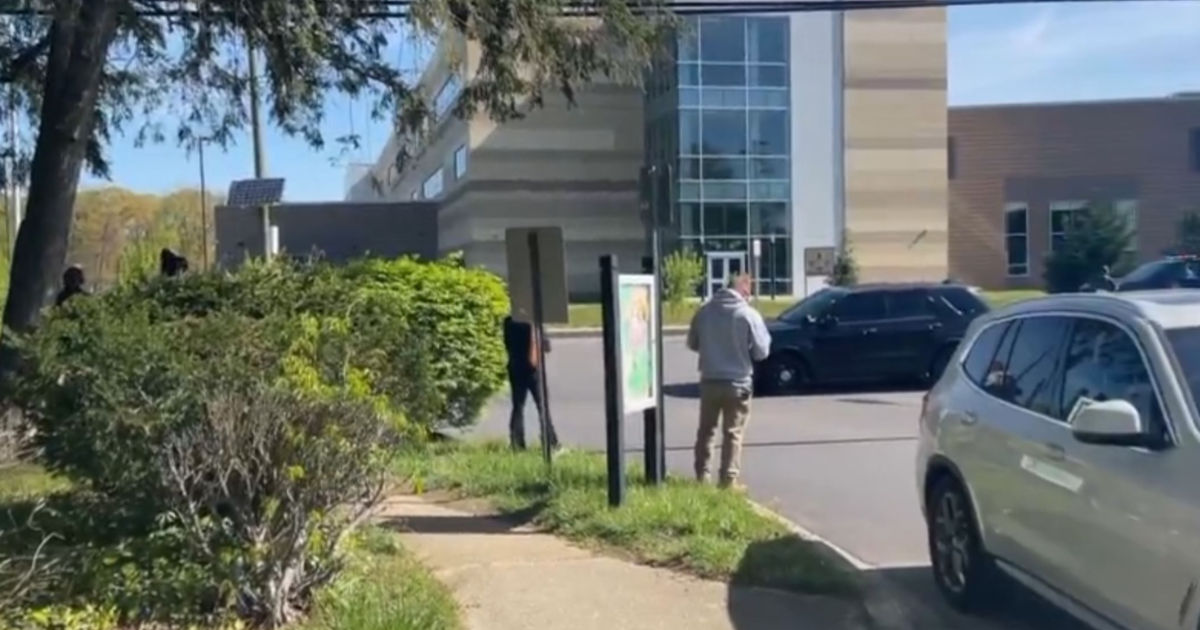Prince George's Police Plan to Roll Out Body Camera Program
J.F. MEILS, Capital News Service
COLLEGE PARK, Md. (AP) — At some point before April, 70 officers from the Prince George's County Police Department will go to work with a new piece of gear: body cameras.
Advocates hope the PGPD program — smaller in scope than similar efforts by police forces across the nation — will bring more accountability to a department with a long history of wrongdoing.
"There is still a belief in the Prince George's community that police officers are corrupt, hiding things and will lie to avoid responsibility for doing something improper," Steven Vinick, a local defense attorney who handles police misconduct cases, told Capital News Service.
The PGPD was last released from Justice Department monitoring in 2009 after "an alleged pattern or practice of excessive force throughout" the department. But concerns over police misconduct persist. The PGPD, the 27th largest force in the nation, tallied more than 700 allegations of misconduct in 2015, according to County's Citizen Complaint Oversight Panel.
As police forces rush to implement body camera programs nationwide, it's not clear if they will solve systemic policing issues like those identified by the Justice Department in New Orleans, Ferguson, Baltimore or Chicago.
It's an open question in Prince George's County, too. The County Council provided significantly less support than requested for the PGPD pilot program -- about $135,000 -- with the department itself contributing $65,000 from its asset forfeiture program. The initial estimate from Carlos Acosta, the department's inspector general and architect of the program, presented to the council was $3.5 to $5 million for three years to outfit a total of 1,000 officers.
By comparison, Baltimore County, whose police force is only slightly larger than the 1,700 officers in Prince George's, signed a $12.5 million, 8-year contract with Taser a year ago, in addition to kicking in $1.5 million in annual operating costs for a staff of 19 to administer the program.
"This (body camera program) is a much-needed reform," said Cary Hansel, a civil rights attorney who won a landmark case against the PGPD for coercive interrogation practices in 2006, and again on appeal in 2011. "But before we applaud it, we really need to see it implemented."
Acosta is well aware of the department's past. He was raised in Langley Park and worked as a deputy state's attorney in Prince George's. He thinks the body camera program will help improve the relationship between the public and police.
"I believe the person behind the camera and the person in front of it will behave better," he said.
For Prince George's 900,000 residents — two-thirds of whom are black — the PGPD's reform efforts are still a work in progress. But some residents share Acosta's optimism.
"Citizens of the county overwhelmingly view body cams as a step in the right direction," said Rashawn Ray, a University of Maryland sociologist working with the PGPD on a range of studies, including community perceptions of body cameras.
Change and the PGPD
The 1999 Justice Department inquiry that led to a decade of federal monitoring began in the PGPD's canine section. A Washington Post investigation that year cited 18 lawsuits involving assaults by PGPD dogs during a six-year stretch in the mid-1990s. According to the Post, "Prince George's County police sometimes let dogs loose to attack whomever they encounter and, at other times, order them to bite suspects already subdued or handcuffed."
A number of recent high-profile incidents have not helped the department shed its reputation for brutality.
In January 2016, former PGPD officer Jenchesky Santiago was sentenced to five years in prison for putting his gun to the head of a Maryland man in May 2014, claiming the victim was illegally parked in front of his own home.
PGPD officer Juan Hernandez was indicted by a grand jury in December 2016 for using a police car to strike an unarmed suspect who was running away, according to John Erzen, a spokesman for the Prince George's County State's Attorney's Office and court records.
In 2012, PGPD officer Jerry Thomas was caught on video punching a handcuffed 15-year-old in the face twice after the teen jawed at Thomas in a county jail cell. Thomas received probation and was found guilty of misconduct, according to court records.
Lastly, there was the on-campus beating of University of Maryland student John McKenna following a University of Maryland basketball victory, which led to a 2nd-degree-assault conviction for PGPD officer James J. Harrison.
Would body cameras have prevented these incidents?
Hansel cited the department's experience with dashboard cameras, a 10-year-old program, as a reason for skepticism. "Unfortunately, what happens is when video helps the police, it's readily available," he said. "When it doesn't help the police, the camera was broken that day, or not working or the data was corrupted — I've heard it all."
A 2015 report from the Prince George's Civilian Complaint Oversight Panel confirmed Hansel's concerns: "Unfortunately, a pattern has continued over the past several years where many older police cruisers either have no audio-visual equipment; have obsolete or malfunctioning equipment; or officers have demonstrated a lack of training in properly deploying the equipment."
The county's body camera program will go live against a backdrop of fluctuating complaint numbers over the last decade.
Of the 746 allegations of misconduct against the PGPD reported by the County's Citizen Complaint Oversight Panel in 2015, 185 — or one in four — were related to use-of-force.
The department's internal affairs division, which pursues investigations of misconduct, sustained 97 of the allegations and exonerated officers in 104 instances. In 179 cases, the allegations were determined to be "unfounded," or not true, and 366 allegations were "non-sustained," defined as: "The evidence fails to prove or disprove the alleged act(s) occurred," according to the CCOP.
The 2015 report from the CCOP also noted that the percentage of allegations sustained by the department's internal affairs division in 2015 fell by 22 percent from the prior year and by 16 percent from 2013.
A pilot program
When the program launches, one squad of 10 officers from each of the county's seven districts will be outfitted with body cameras. A second squad from each district without cameras will serve as a control group, to facilitate a larger group of studies being done by the University of Maryland.
The partnership, hatched almost two years ago by Acosta and Patricio Korzeniewicz, the University of Maryland's sociology department chair, includes a number of initiatives designed to assess the PGPD's body camera program.
"Some officers don't want them," Ray said. "But the majority are in favor because they feel the body cams will reduce the number of complaints they receive."
Charles Wellford, former criminology department head at the University of Maryland, concurred. "Instituting body cameras almost always has an impact in reduced number of complaints," he said.
However, Wellford also pointed to a recent study by Cambridge University that revealed two surprising new findings: Rates of assault against police officers wearing body cameras increased 15 percent compared to those without them; and if officers have discretion about when to activate body cameras, use-of-force incidents rise by more than 70 percent.
"We're trying to engineer the decision process (for activating cameras)," said Acosta, who was only willing to share parts of the PGPD body camera policy with Capital News Service because it was still being negotiated with the county's lodge of the Fraternal Order of Police.
When the policy is finally released, it will be closely scrutinized by community and civil rights groups.
"The policy must give enough direction to officers so the public can be assured," said David Rocah, an attorney with the ACLU of Maryland. "But it must also be clear enough that it can be enforced when cops don't follow it."
Rocah also knocked the PGPD for failing to offer the policy for public review and comment before it goes into effect, as Baltimore County did.
Essentially PGPD officers must turn on their cameras when they are dispatched on a call or at "...the initiation of any proactive enforcement action." Officers may also ".use BWCs to record initial interviews of victims, complainants and witnesses(,)" according to portions of the draft policy shared by Acosta.
PGPD officers will also be able to review footage of incidents where their actions are under investigation before making statements or writing reports — an issue that was contentious when Baltimore County's policy was negotiated. In Baltimore City, the working group assembled by then-Mayor Stephanie Rawlings-Blake to make recommendations for the city's body camera policy did not favor officers reviewing their footage in "non-routine" incidents, though Baltimore's policy ultimately allowed it.
"(Officers reviewing footage) destroys the integrity of an investigation," Rocah said. "It wouldn't happen in almost any other context and is really a way police officers are treated different from others."
John "Zeek" Teletchea, president of the Prince George's County Fraternal Order of Police, disagreed.
"Our position is that officers should be able to review cam footage, especially in cases of criminal incidents," he said. "It's been proven that immediately after an incident, you don't have the ability to recount it perfectly. It only helps the officer and agency to compile a complete account of what happened."
Teletchea is also concerned about protecting the privacy of police officers.
"When not doing official functions as a police officer, that video should in no way, shape or form come back to them as discipline for behavior that may not be appropriate for the workplace," he said.
The Cost of transparency
"At the end of the day, we're going to spend X amount of dollars...What did we accomplish? Are we changing behavior?" Acosta asked, explaining how the PGPD program will be judged.
"We know that complaints go down," said Wellford, who has worked with more than 20 police departments, including the PGPD. "But we don't know why. Is it the officer that changes or the citizen?"
If Acosta is right, it's both. If he's wrong, the public and the department will find out soon enough.
Copyright 2017 The Associated Press. All rights reserved. This material may not be published, broadcast, rewritten or redistributed



